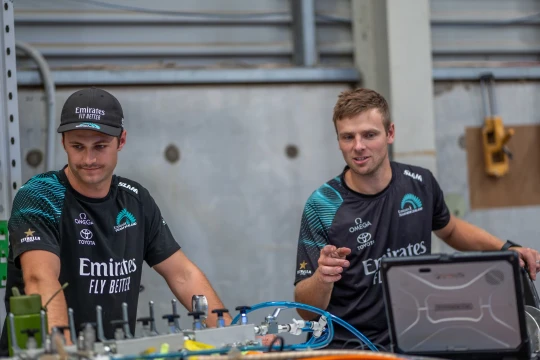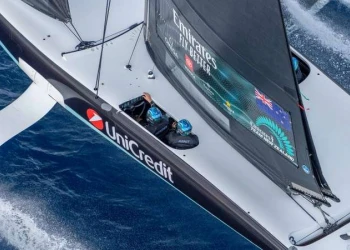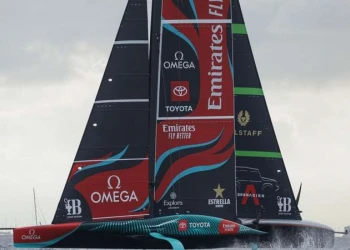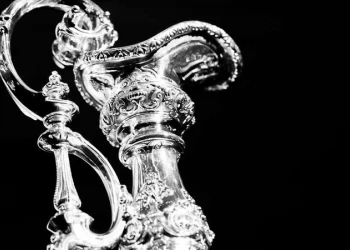
Emirates Team New Zealand: the hidden world of hydro
Emirates Team New Zealand: the hidden world of hydro
Hydraulics is one such area, so much so, that when Emirates Team New Zealand’s new race boat is launched next month, there will be very little of the department's work on display to the public or reconnaissance cameras.
However, without an optimal hydraulics team running the complex AC75 hydraulics system, winning the America’s Cup would be a lot harder than it already is for the teams.
“The whole system on the boat, like the lifeline or the blood of the boat, is hydraulics and hydraulic oil.” Explained Peter ‘Brush’ Thomas who heads up the Hydraulics department of Emirates Team New Zealand.
The boats, either AC40 or AC75 will not operate without hydraulics, so it is the ‘hydro team’ that ‘wake up’ the boat in preparation for sailing each day.
“We are one of the first group of people in to turn the boat on, fire up the hydraulics, do a quick visual test and pressure tests and check the systems are going to be functional for the entire day.” explained hydro team engineer James Graham.
But that is far from the end of their daily job list explains hydraulics engineer Ethan Jones,
“It is an endless task for the team, along with pre and post sail checks, you're always working on something. Testing and assembling manifolds, making new hoses, it's just constantly changing on the boat so it's cool.”
There are three different hydraulic systems on the AC75 boat which the sailing team utilises to sail the boat. So, when creating the overall hydraulic systems, it is the sailors that provide the input on what they ultimately want when sailing, and that filters down through the mechatronics team, to the hydraulics department who produce the hardware on the boat in an effective working condition.
Scott Barnes, who is the lead hydro engineer, explains the three different hydraulic systems on the AC75’s, “The cyclors are powering pumps under the deck, and they're controlling the sail functions that change the shape of the sails and make the boat go faster essentially.
Then there is the FCS system, which is the foil cant system, powered by batteries. That's a one design component which all the teams have, and that's what you'll see operate in every manoeuvre where the boat's tacking and gybing
And finally there is the flight control system, which is the rake of the rudder, and the flaps down underwater, and those move like an airplane wing as well, which helps to fly the boat.” said Barnes.
The hydro team of Peter Thomas, Scott Barnes, James Graham, Ethan Jones are a tight group that have been working tirelessly for the past few years and have recently been joined by RNZAF Aircraft technician Michal Johnston who is taking a year’s leave from the Airforce to join the Emirates Team New Zealand hydro team.
“Everything that moves on the boat is through a hydraulic ram and it’s not too alien in terms of aircraft hydraulic. There are different systems but the physics are all the same. So like an aircraft all of the systems need to be really looked after.” said Johnston
“It’s a busy but dynamic place to work with big hours but it’s cool and there’s a big team. We are all working towards a goal and we all help each other out.”
So what’s the sign of a successful day for the Emirates Team New Zealand hydro team according to Brush?
“Probably the biggest success is when the boat comes back from a day on the water and we just do our checks and everything's good because then you know that all the modifications that you've been working on actually mean something and you're actually progressing.”
Final word to one of the long-time stalwarts of Emirates Team New Zealand shore crew James Graham
“It's not always easy and it's not always fun, but you appreciate just what we have here. We've got a good group of people that work hard and are aiming for the same goal.”
Which to nobody’s surprise, is winning the America’s Cup in October this year.







